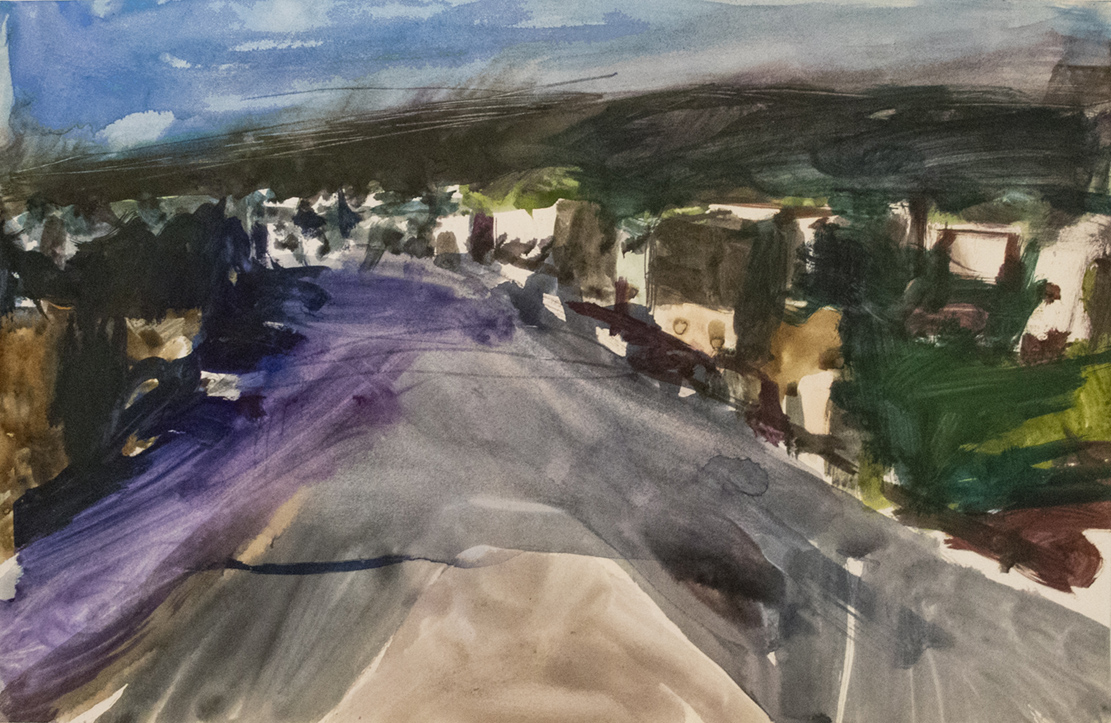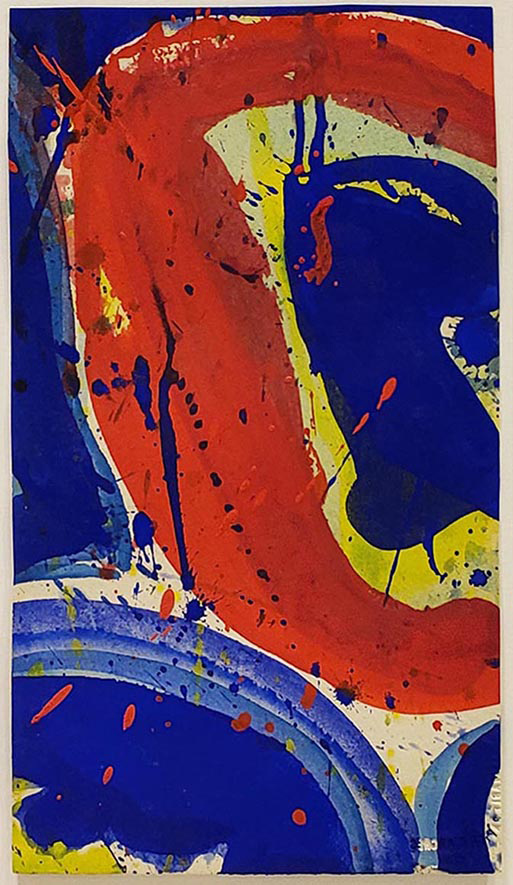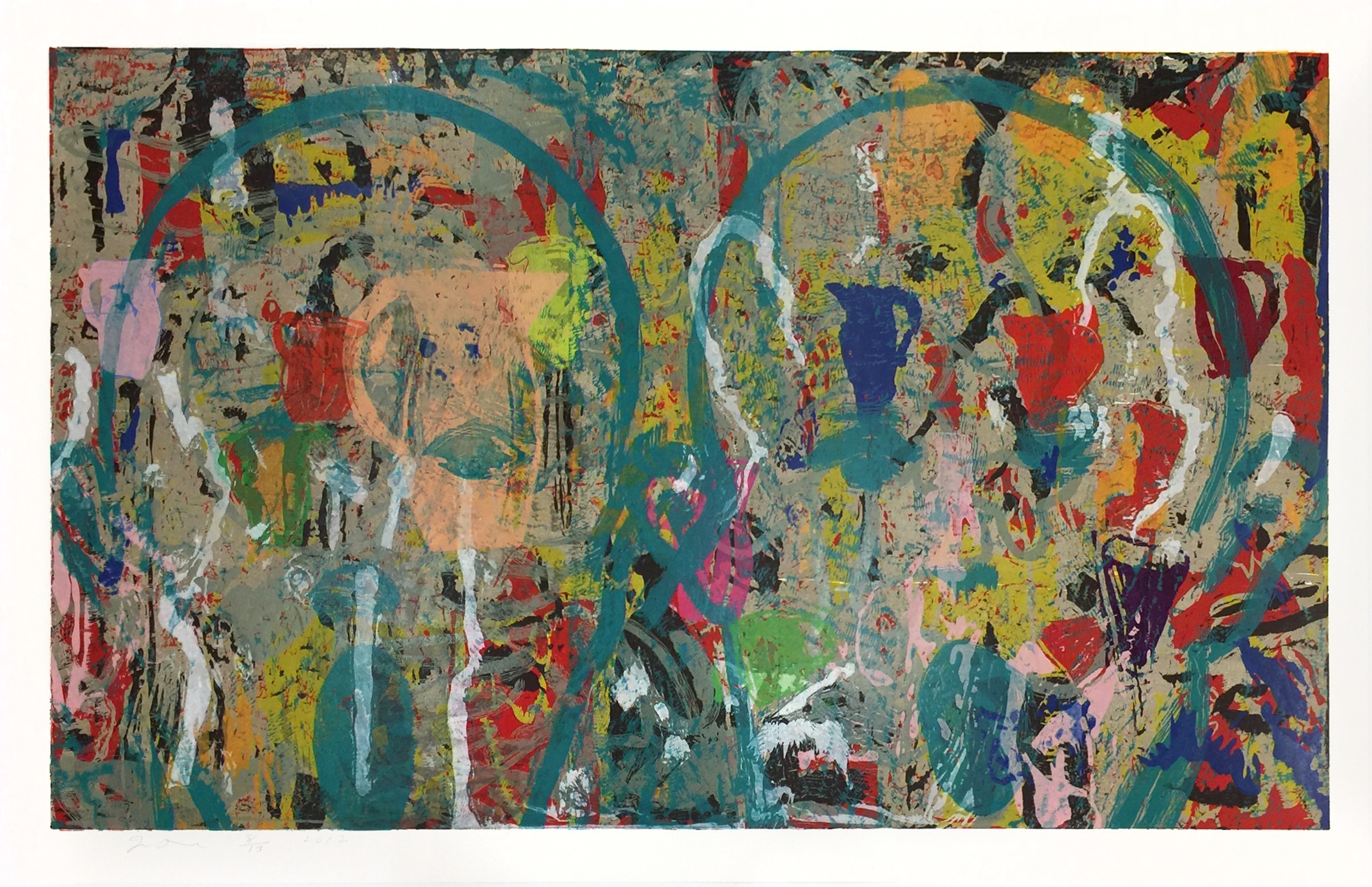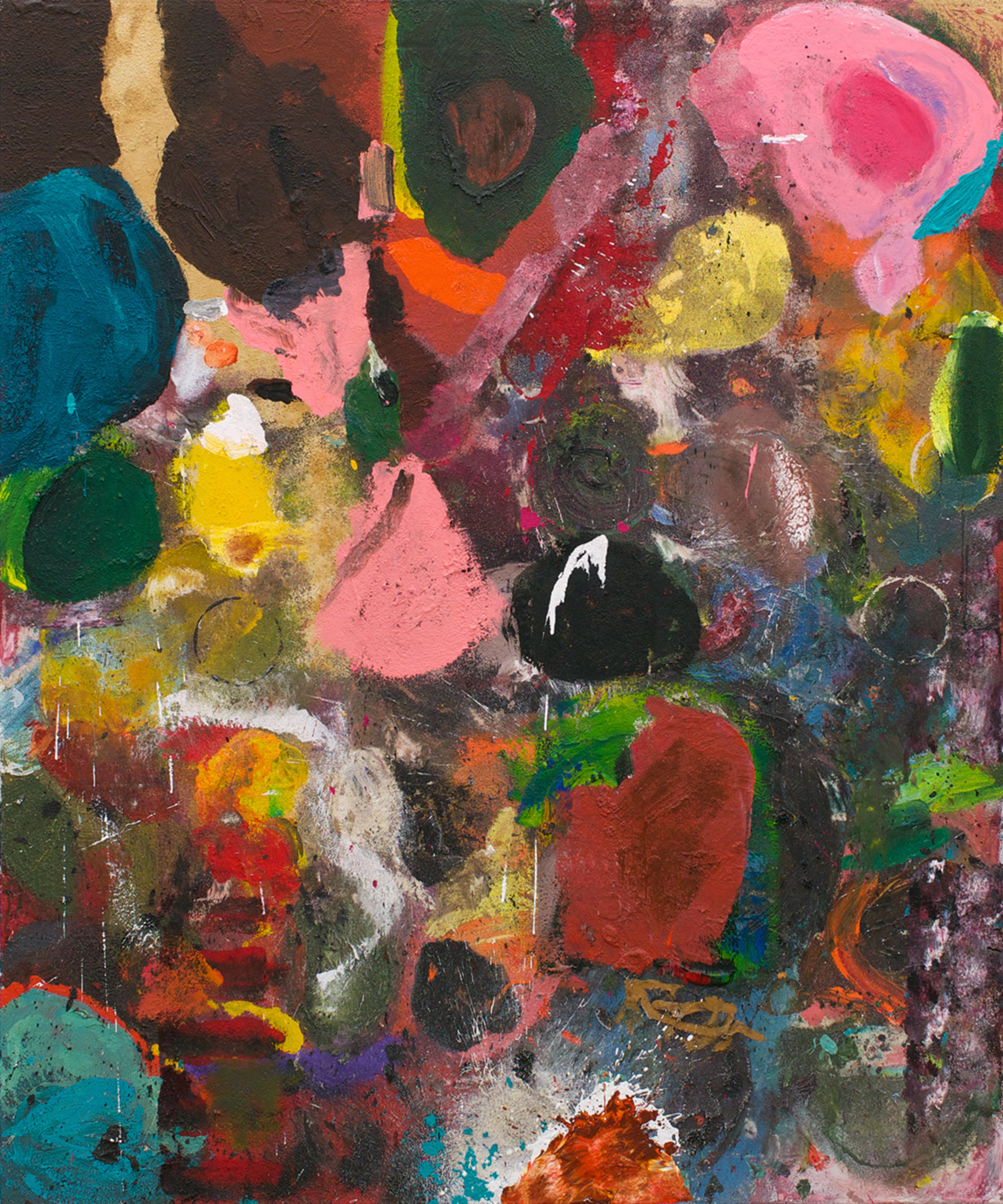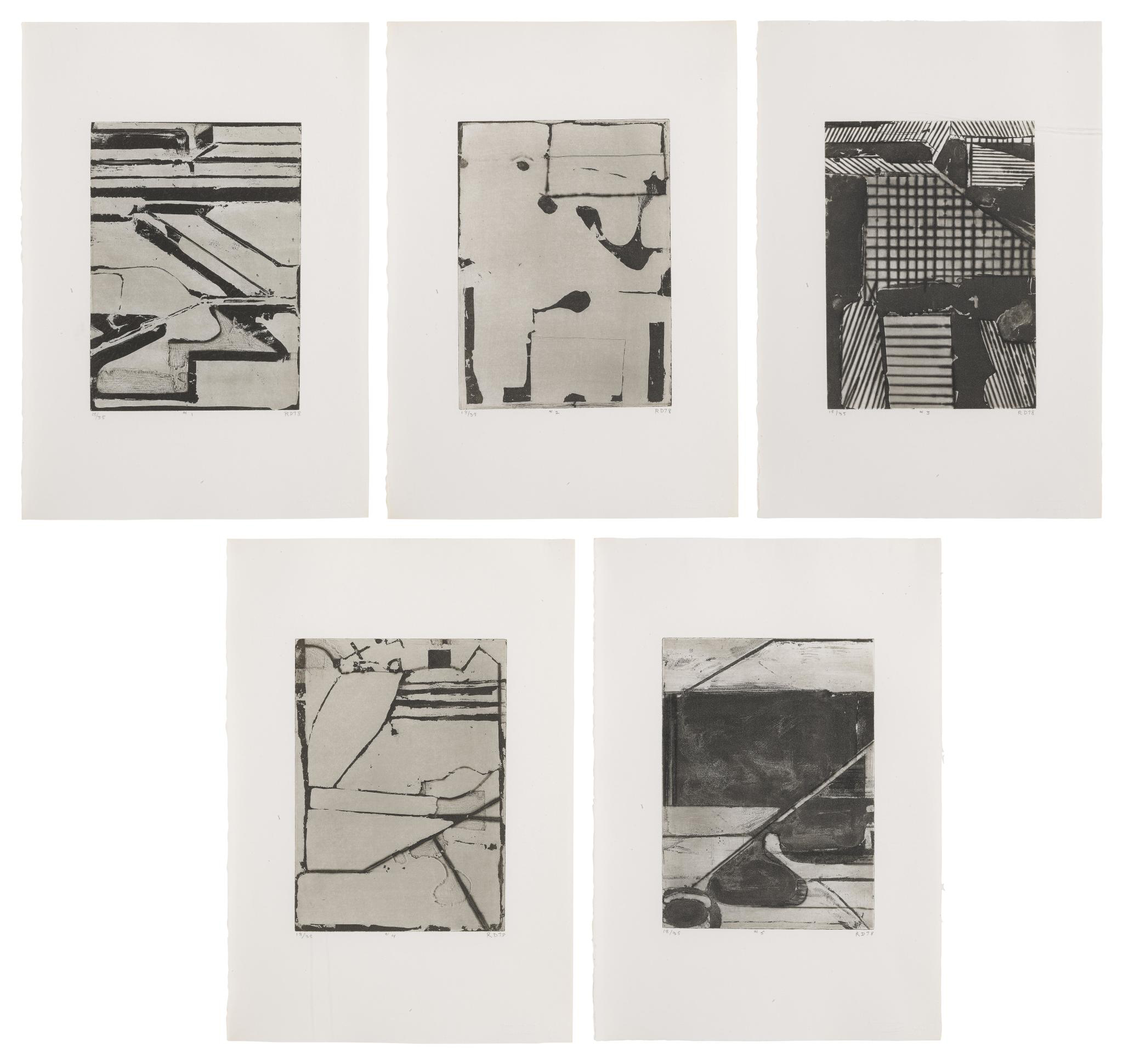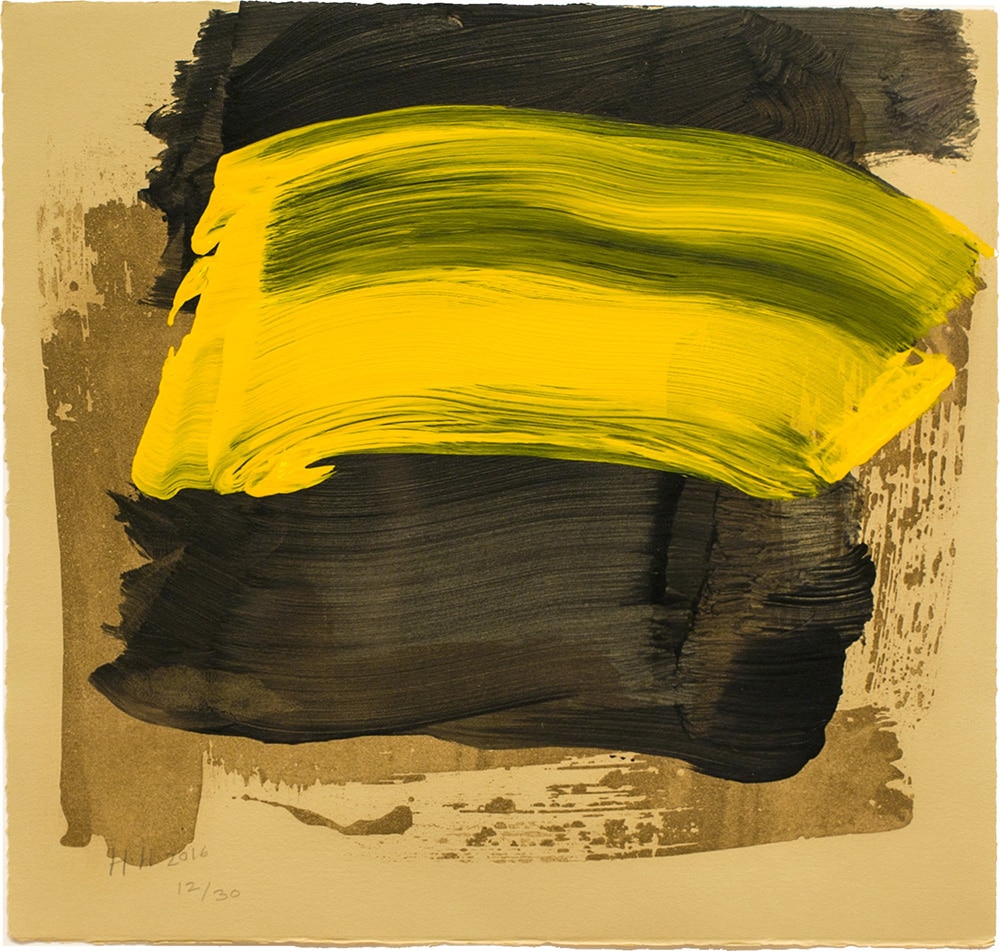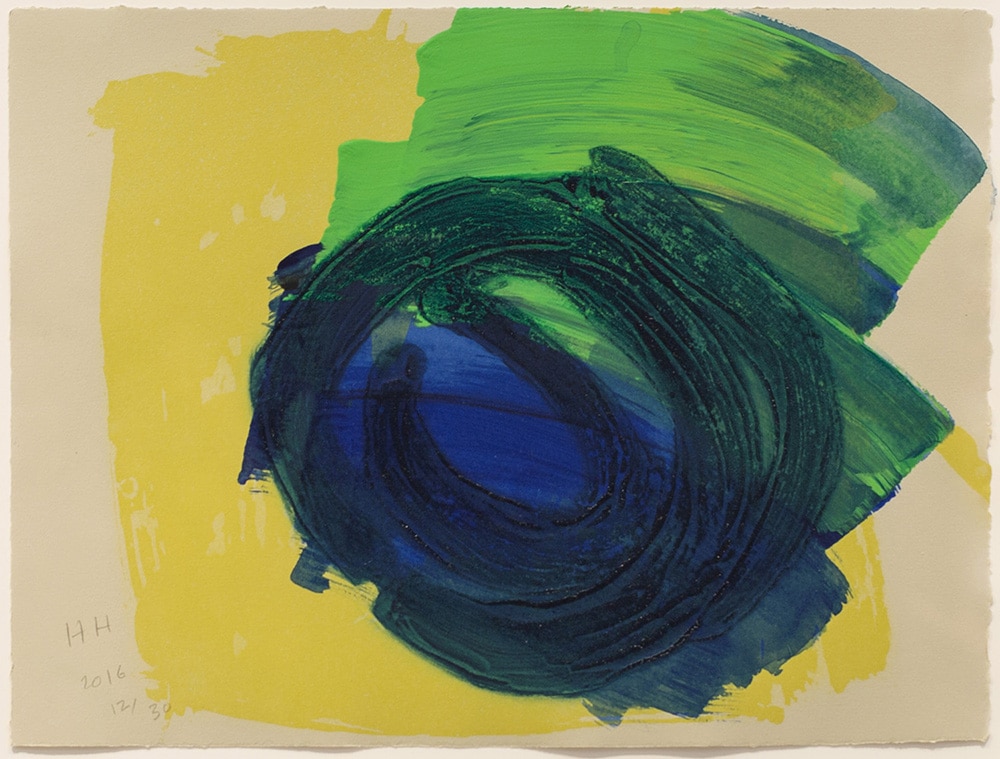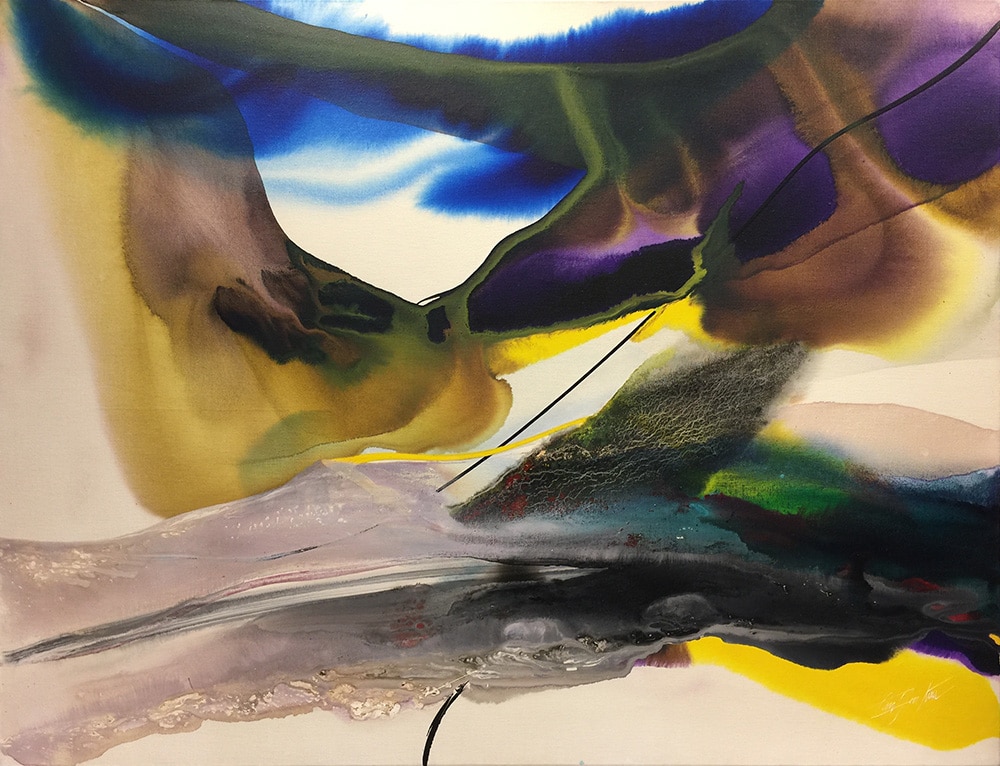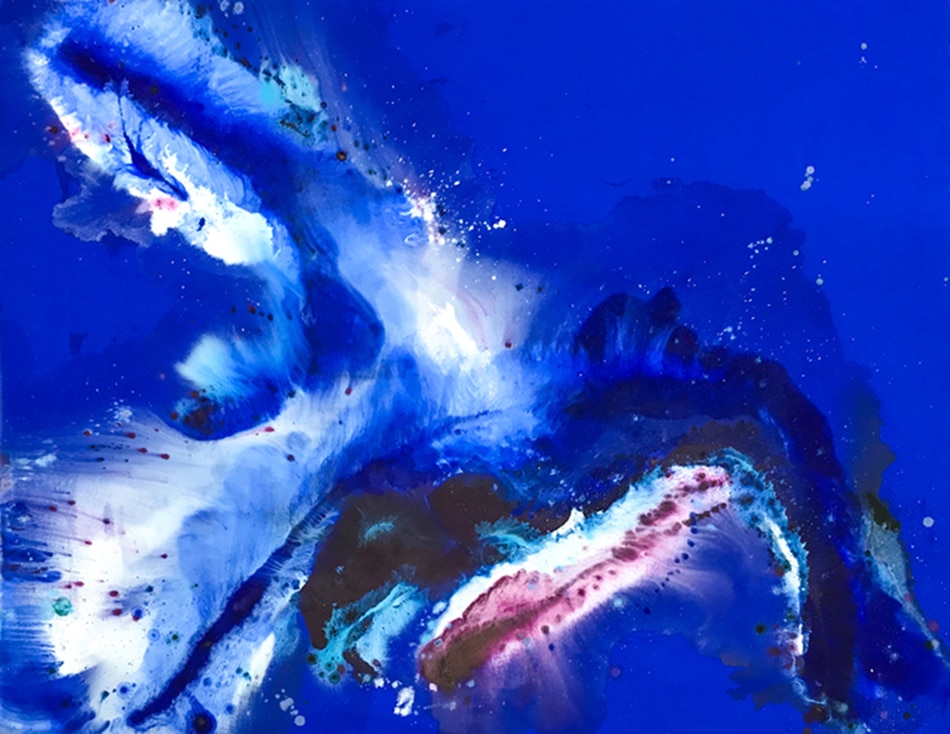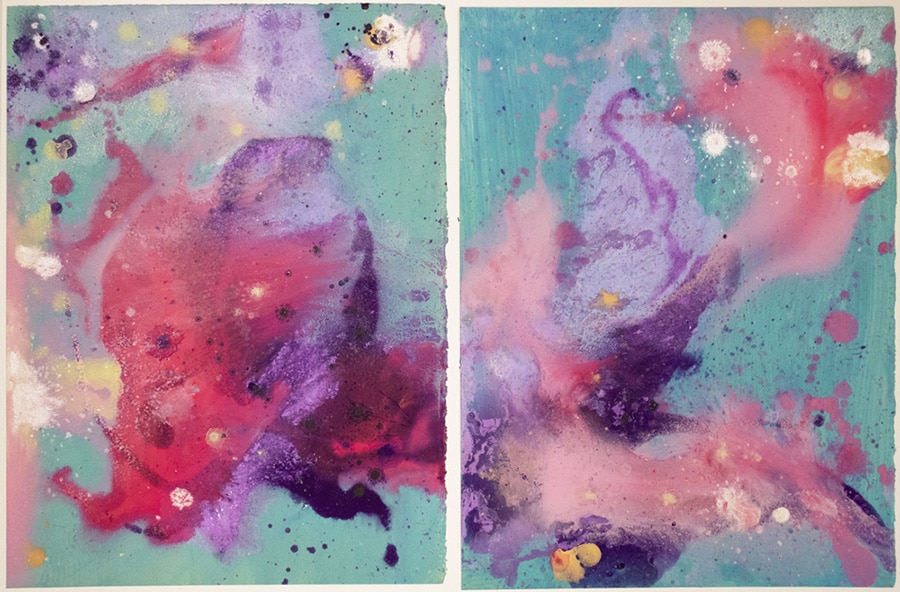ABSTRACT EXPRESSIONISM
Richard Diebenkorn
Untitled (c.r. no. 2261)
c. 1958-64
Gouache on paper
11″ x 17″ (27.9 x 43.2 cm)
Sam Francis
Untitled (SF63-331)
1963
Mixed media on Arches Paper
9-7/8″ x 5-1/2″ (25.1 x 14 cm)
Framed: 18-3/4″ x 14-3/16″ (47.6 x 37.6 cm)
Jim Dine
Painters and Poets in the French
2017
28 color woodcut from 15 blocks on Fabriano Artistico 640 gsm paper
Sheet: 51-1/4″ x 83-1/2″ (130.4 x 212 cm)
Image: 45-3/4″ x 79-1/4″ (116.5 x 201 cm)
Edition of 13
Jim Dine
Tear Up The Screams
2014
Acrylic, sand and charcoal on canvas
72″ x 60″ (182.9 x 152.4 cm)
Jim Dine
The Dear Ape
2015
Woodcut, power-tool abrasions and lacerations, with hand-painted acrylic and Glycero on Hahnemuhle 350 gsm Off White paper
63″ x 49-1/4″ (160 x 125.1 cm)
Edition of 5
Abstract Expressionism is a movement in American painting that developed after World War II. While one artist’s style can vary widely from another, the movement is characterized by energetic and emotive applications of paint, either with brushes or applied directly to the canvas by dripping and staining. Although the Abstract Expressionists rejected the representation of earlier modernist movements, they insisted on the importance of a subject, often drawing inspiration from the universal imagery of myth.
Known more specifically as Gestural Abstraction, the movement values the artist’s physical role in creating the painting as an immediate, authentic gesture, in which the event is as important as the final result. For the Abstract Expressionists, pigment was a tool to expose tragic emotion and the complexities of an anxious human condition.
The Abstract Expressionist pioneers have also been referred to as the New York School; many lived and painted in Greenwich Village and their spirited debates in the Cedar Tavern regarding the nature of painting have become legendary. The experiments undertaken by the first generation of artists including—but not limited to—Mark Rothko, Willem de Kooning, Jackson Pollock, Hans Hofmann, Clyfford Still, Barnett Newman, Franz Kline, and Adolph Gottlieb were originally criticized, but are now recognized as one of the first uniquely American styles to achieve international acclaim. Together with younger Abstract Expressionists, Robert Motherwell, and the so-called “second generation” artists including Sam Francis and Helen Frankenthaler, these figures challenged traditionally held notions of artistic expression and helped to shift the center of the contemporary art world from Paris to New York.
INQUIRE ABOUT AVAILABLE WORKS:
Richard Diebenkorn
Five Aquantints with Drypoint
1978
Portfolio of five aquatints with drypoint on Rives wove paper
Each framed: 24″ x 16-1/2″ (61 x 41.9 cm)
Edition of 35
Howard Hodgkin
Late Autumn
2015-16
Hand-painted sugar-lift aquatint from 1 plate, printed in Raw Sepia, then hand-painted in Mars Black and Cadmium Yellow Dark on Velin Cuve BFK Rives Tan 280 gsm paper
15-3/4″ x 15-1/4″ (40 x 40 cm)
Edition of 30
Howard Hodgkin
Absolutely
2015-16
Hand-painted sugar-lift aquatint with carborundum relief from 2 plates. Sugar-lift printed in Primrose Yellow/Zinc White mix with a touch of Viridian, then hand-painted in Ultramarine Blue and Spring Green. Overprinted with carborundum relief in Turquoise/Prussian Blue mix, on Velin Cuve BFK Rives Grey 280 gsm paper
13-1/4″ x 17-1/4″ (33.5 x 44 cm)
Edition of 30
Paul Jenkins
Phenomena Land in Site
1970
Acrylic on canvas
35″ x 45-1/2″ (88.9 x 115.3 cm)
Framed: 36-1/4″ x 46-3/4″ (92.1 x 118.7 cm)
Augustus Francis
Oltremarino
2018
Oil on canvas
60″ x 76″ (152.4 x 193 cm)
Augustus Francis
Liquid Light
2018
Diptych oil on paper
Each sheet: 15″ x 11-1/4″ (38.1 x 28.6 cm)

